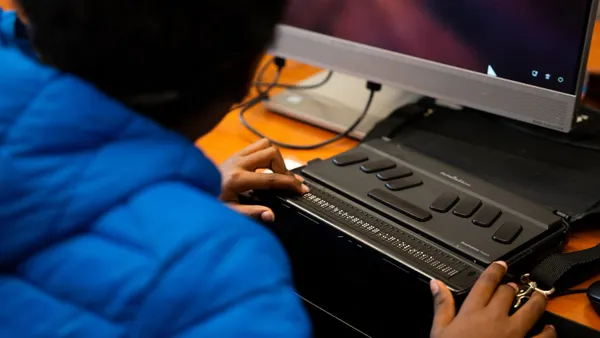Dive Brief:
-
There is more to successfully implementing ed tech than just making the purchase, as success is much more about having a plan with well-defined "whys" and "hows" for the technology, strong support infrastructure and ensuring all departments and stakeholders are on the same page than it is simply about the tech, eSchoolNews reports.
-
All digital initiatives need to be focused on what’s best for the students — who will often explain themselves how particular ed tech will benefit them — and discussions about rules and policies for use are crucial.
-
Success also requires the elimination of silos to ensure all parties are connected and on the same page — with the IT department, for example, better able to identify the right tech to purchase if it's talking with teachers and the district's academic offices, strengthening the process of defining why the district is making these changes and how it will get there.
Dive Insight:
A successful ed tech rollout requires more than just plopping a set of ChromeBooks down in front of a class of 6th-graders. Before those students even see the light of the screen, teachers need professional development on the technology so it can be best used for what it was intended.
Strategic tech rollout plans should be written out, specific and detailed. And they should include information on the current and needed states of infrastructure and bandwidth, as well as purchasing and maintenance strategies.
Ed tech challenges districts to break down the silos that separate information from one department to another. When it comes to ed tech, all departments should be in the know. The more knowledge a teacher is given on how the devices work, the more they will be willing to accept them as a new part of the curriculum. Teachers should also be taught to unlock the valuable learning data that ed tech produces.
The last thing any district needs is to spend its limited funds on ed tech that will never be used. Prior to any purchase, due diligence must be performed to be sure tech is relevant and useful to the students in the district. Keep in mind how quickly tech changes. Will that tech be relevant in three years? And if not, is it really worth the price?






 Dive Awards
Dive Awards






